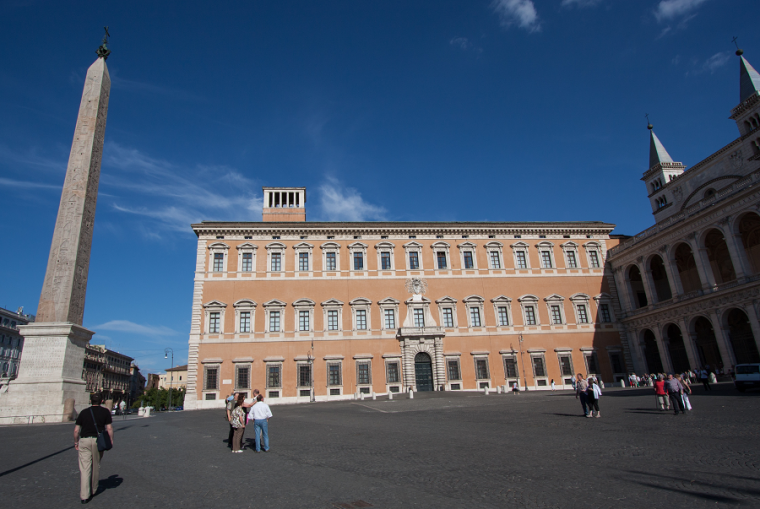Pope Francis on Tuesday said the Lateran Palace, the former centuries-long papal residence located in southeast Rome, should now be used as a museum.
In a letter to Cardinal Angelo De Donatis, the vicar of Rome, published March 16, Pope Francis wrote that a desire to promote and protect the Church’s beauty and cultural heritage had inspired him to dedicate the Lateran Palace for “museum and cultural activities.”
As vicar of the Diocese of Rome, De Donatis was entrusted with the task of organizing these activities together with the Vatican City State.
What is now known as the Lateran Palace began during the Roman Empire as the Domus Laterani, the home of the Plautii Laterani family.
Emperor Constantine gave the property to the bishop of Rome in the 4th century, and it served as the papal residence until the Avignon Papacy and subsequent move to the Vatican in the 14th century.
Called the Lateran Patriarchate for hundreds of years, the palace sits adjacent to the Archbasilica of St. John Lateran, which is the cathedral church of Rome and the seat of the pope as the bishop of Rome.
With the signing of the Lateran Treaty in 1929, the palace and basilica are extraterritorial properties of the Holy See.
The Lateran Palace was once the site of a museum founded by the popes. The artworks of the Lateran Museum, which was closed in the 1970s, were given to the Vatican Museums.
Today the palace houses one part of what is called the Vatican Historical Museum, which includes portraits of the popes, memorabilia of the Papal Military Corps, and papal household items no longer in use.
The building is also used for administrative offices of the Vicariate of Rome and the apartment of the Vicar of the Diocese of Rome.
Pope Francis wrote that the Church, “over the centuries, has always worked to promote what is the fruit of the genius and mastery of artists, often a testimony of experiences of faith and as tools to give honor to God.”
“This not only for the love of art, but also to safeguard the cultural heritage in the face of challenges and dangers that would have deprived it of its function and value,” he continued.
This responsibility, he noted, meant that many of his papal predecessors preserved important places and buildings as an “integral part of the culture of humanity,” making them available to scholars and visitors.
Francis stated that it is this “task that even today commits the Bishop of Rome in making available the beauty and features of Goods and artistic heritage entrusted to his protection.”

